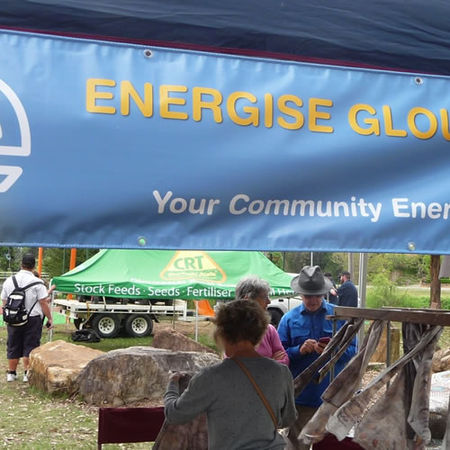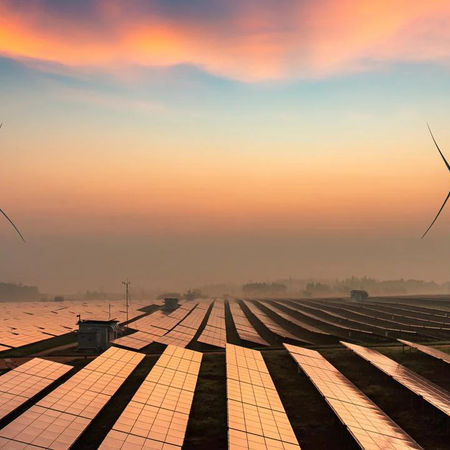
Chairmans Note
Energise Gloucester is still active – but the plans for our solar farm are changing.
It was very disappointing to be finally told by Essential Energy that we could not export 500kW of electricity from the Tugrabakh site. This was despite being previously advised that the site was suitable for the Solar Farm as long as we paid the $275,000 connection fee. In order to recover this, and other increased costs, we had planned to add a battery to the system for time-of-day sales and increased income.
When Essential Energy worked through this change, they decided that the grid at our site was not stable enough for export with or without a battery. Therefore, the project could not proceed and all our work on site selection, electrical design and tendering was wasted. The Committee was devastated; we went quiet to consider our options.
The New South Wales Government’s Regional Community Energy Fund however did realise that this was not the fault of Energise Gloucester and has asked us to reconsider other sites. None of the previously investigated sites was suitable for similar reasons. So in collaboration with Komo (our technical advisors), we set to work again and have chosen a new site and have been very busy developing a new design in collaboration with Midcoast Council. We are aiming to release details of this next month.
As you can imagine, it has been a frustrating year but our objective is to have a solar generation and battery storage system operating by June 2023.
Meanwhile, there are lots of interesting developments in the community energy landscape so we are highlighting some of these in this Newsletter.
Yours with energy
David
Feature Articles
Solar Gardens - What Are They?

Solar gardens are a solar farm in which energy customers can purchase panels. These customers do not have to be directly connected to this solar farm. The electricity generated by the purchased panels is credited to the customer’s electricity bill.
Even though the purchased solar panels are located away from the household, they receive a financial outcome on their bill; it’s a bit like having solar panels on their own roof. This enables anyone including renters and low-income households to benefit from solar energy.
Haystacks Solar Garden Launch
The Haystacks Solar Garden was launched in mid-September. Partnering with the Grong Grong Solar Farm, Haystacks will provide New South Wales residents with the opportunity to purchase a plot in Australia's first large-scale solar garden.
The Grong Grong project is one of the Regional Community Energy Fund projects in NSW along with the Gloucester project. Komo Energy is also providing technical management to that project which will commence construction later in 2022.
If you would like to learn more about the Solar Garden, check out this link - https://haystacks.solargarden.org.au/
You can also read more about how the Grong Grong Solar Farm is hosting the Haystacks Solar Garden on the Grong Grong Solar Farm Website.
A Township Model In WA
The wheat and sheep farming town of Katanning in Western Australia is embarking on a project to change not just how it gets electricity, but who gets the money.
Under the plan, the town will essentially become its own power station. Rather than importing electricity from elsewhere, the community will generate it locally. More importantly, the solar panels would be community-owned, meaning the millions spent on electricity bills wouldn't leave the region. It is hoped this will mean cheaper energy, new energy-intensive industries, a more resilient grid, and a more prosperous local economy. But there's a long way to go.
Katanning with a population of about 4,000 is at the very beginning of a three-step program:
- Assisting households and businesses with access to clean energy technologies like solar panels and batteries;
- Setting up a community energy retailer to share energy across the community, so that all the rooftop solar panels form an aggregated "virtual power plant"; and
- Scaling up generation and storage by building a solar farm or installing a community battery.
In the first two years, Katanning Energy expects to have managed 200 installations, with a total capacity of about 2,000 kWh.
Fortunately, the WA regulations allow this type of development. Unfortunately, in NSW it is not possible.
Enova Collapse
Australia's first community-owned energy retailer, Enova, was placed in voluntary administration in June 2022. In an email sent to customers, the company said the energy crisis affecting Australia's east coast had an "unbearable" effect on the company's ability to operate.
Enova's chief executive, Felicity Stening, says the state of the energy market is "diabolical".
The company focused on providing energy from renewable sources. About half of its energy supply was purchased from its customers' rooftop solar, while the other half was typically provided by Victorian-based retailer Diamond Energy. But Enova said it had not been able to secure a new fixed pricing arrangement after its agreement with Diamond Energy came to an end.
Enova said that would have meant the business became "fully exposed to severely inflated wholesale energy prices" from July 1. When combined with a cap on customer pricing, Enova said it was no longer financially viable.






